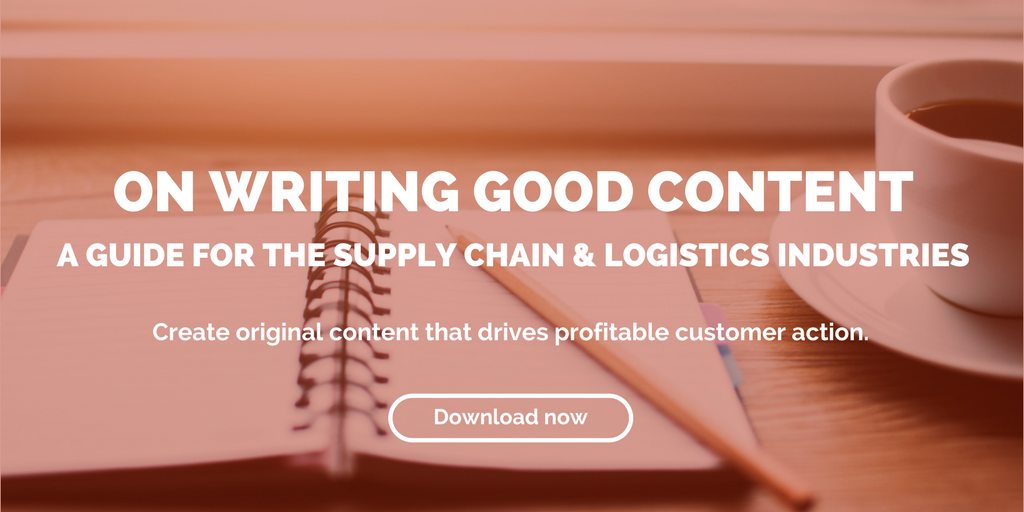
by Fronetics | Jan 12, 2016 | Blog, Leadership, Marketing, Strategy, Supply Chain, Talent

Recruiting and retaining top talent is one of the largest issues the supply chain faces today. It has, in many ways, become an industry of gaps: skills, talent, and gender, to name a few. How can companies secure their future by acquiring, developing, and keeping employees with the potential to undertake future leadership roles?
Fronetics Strategic Advisors works with clients to understand and execute on talent acquisition, performance management, learning and development, and succession management. We also work with clients to design and develop roles and responsibilities, on leadership development, mentoring and counseling, and on performance management and compensation strategies.
Here are our most-read talent articles of 2015:
While the number of full-time women in the workforce is up 15% since 1979, the number of women in the manufacturing sector is the lowest it has been since 1971.The gender gap extends more broadly to the supply chain, as well, with 70% and 80% of positions held by men. This article examines the talent crisis within the industry as an opportunity to help close the gender gap, and offers suggestions for building that bridge. Read the full article.
This interview with Rodney Apple, founder of the SCM Talent Group and supply chain recruiter for the majority of his 19-year career within the staffing industry, examines the challenges facing the industry and opportunities to address the talent crisis moving forward. Read the full article.
The outlook seems dire: by 2025, 60 million baby boomers will exit the workforce, leaving a gigantic gap when 40 million millennials take their place. What’s more, as few as 20% of the workforce will possess the broad range of skills required of 60% of all new supply chain jobs. The good news is that this looming crisis represents an ideal opportunity for recent college grads and mid-level supply chain management. Companies hoping to appeal to top candidates in the future should be proactive about meeting their professional needs through initiatives like competitive salaries and cross-functional training — or else, they might miss out. Read the full article.
Zappos offers new hires a $4,000 bonus to quit after an initial training program — and it actually has helped them retain top talent. Offering an early out to employees can be an effective method to detect personnel issues up front and ultimately can save your company from a major financial loss in the future. Read the full article.
When it comes to your career, connections matter. This article lists five reasons why building a strong network is crucial to your professional success. Read the full article.
Millennials — or, those born after 1981 — potentially could breathe new life into the graying supply chain industry. This article examines who millennials are and how companies might attract and retain talent within this oft-misunderstood generation. Read the full article.
Promising employees expect more from their employers when they outperform their peers — and not just in terms of compensation (though that is very important). When those expectations are met with disappointment, the company is at risk for losing top talent. This article discusses strategies for mitigating the loss of talented employees. Read the full article.
According to one study, only 12.5% of companies in the supply chain industry engage in formal succession planning, or the process of identifying top internal performers with the potential to fill key leadership positions. With the dearth of talent facing the supply chain, employers would be wise to invest in succession planning (and their most promising employees) — particularly through these three aspects of the process. Read the full article.
Focusing on education and training, employee retention and growth, and rethinking the talent pool itself does not address the bigger issue in the supply chain skills gap: the industry just isn’t perceived as sexy. What can companies do to overhaul their image and attract new and qualified talent? Read the full article.
Replacing employees is extremely costly — anywhere from 50 to 400% of their annual salaries, it is estimated — yet more than 2 million people voluntarily leave their jobs each month. Companies who are not tending to their human resource assets may be taking a major financial hit. Here are five employee retention strategies to help create a culture where employees are satisfied and interested in working for you long term. Read the full article.

by Fronetics | Nov 16, 2015 | Blog, Leadership, Strategy, Talent

Recently a friend left her job for a new job that offered more money, a better title, and exciting work. She spent much of the last days at her job feeling excited about her new prospect, but something in her was unsettled. She had spent much of the last decade at her job forming and fostering incredibly close friendships. She’s the kind of person who skips over the small talk and digs into the meat of someone’s life fairly quickly. The level of her friendships at work was most likely what was keeping here there for so many years. Leaving felt like a huge loss, even though she had so much to gain at her next job.
Make New Friends But Keep the Old
According to the Deloitte Global Human Capital Trends 2015 report, the first of the six “key findings” is that “softer” areas such as “culture and engagement, leadership and development have become urgent priorities.” Half of those surveyed said that culture and engagement were important to them. Companies who have an engaged workforce can boast up to 147% higher earnings per share.
A study conducted by Dr. Vanessa Boute at Plasticity Labs, confirms previous findings about the tie between valuing co-workers and job satisfaction. The study of over 450 employees showed that those who listed their co-workers as one of their top five things they’re grateful for were more satisfied and more engaged. According to the report, “people who value their co-workers are also more grateful and happy.”
Deep Talk Not Small Talk
We know there’s a connection between friendship and satisfaction, but how do we get people truly engaged with one another in the workplace? My friend, who likes to skip small talk and go straight to in-depth conversation, may be on to something.
According to several studies, people can form deep connections within an hour. One researcher, Arthur Aron, of State University of New York at Stony Brook, has been exploring interpersonal closeness for decades. He found that the kinds of questions you ask can make all the difference. If you ask superficial questions, in the way of small talk, bonds won’t be formed easily or quickly, however if you ask more meaningful questions people feel connected quite quickly. Rather than asking, “How did you spend your vacation?,” a question such as “What would constitute a perfect day for you and why?” will bring about more self-disclosure and more of a feeling of connectedness.
Space and Time
Allowing time in the workplace for employees to connect is critical to friendship development. These days many workplaces are dreary hives of fast production. Encourage mid-day group walks or lunches, and after-work outings. Plan staff development retreats and allow time and space for people to connect. When people have friends at work they will work harder in the end. The time a walk or lunch takes will come back to you and the company in the form of superb work and dedication. Think of that walk as an investment in the company’s future. People may not mind letting down a colleague, but they often mind letting down a friend.

by Fronetics | Nov 4, 2015 | Blog, Content Marketing, Marketing, Supply Chain
3 things supply chain hiring managers should look for when hiring a copywriter.
Since 94% of domestic B2B buyers conduct research online to make purchase decisions, maintaining high-quality content on your company’s website is crucial for attracting new business. But who has time for web upkeep, much less for the generation of new blog posts, emails, and various other content? Enter the copywriter.
An effective copywriter can help drive consumers to your website, convince them of the quality of your products/services, and ultimately help convert those leads into customers. A lot of writers can do one of these functions. The gold standard, of course, is a copywriter with a proven track record in all three functions.
How do you know if a copywriter will be effective for your business? Here are a few specific skills and experiences supply chain hiring managers should look for in a potential hire:
Someone who understands SEO.
An SEO-savvy copywriter can impact your business by increasing the number of visitors (i.e., potential customers) to your site. That’s because 77% of today’s buyers use Google to research information about products.
A copywriter trained in search engine optimization (SEO) knows how to write and format your site so it gets prioritized by Google in web queries for your products. Three of four people will click on the top five search results. So the closer you can be to those top five results, the better your chances at driving a buyer to your site. That’s a crucial first step in converting that lead into a new customer.
Look for SEO training or experience on a potential copywriter’s resume. And ask for any metrics illustrating how his/her search-engine-optimized content has increased organic traffic to a client’s website. A copywriter who understands SEO can help achieve the same result for you over time.
Someone who understands branding.
Sure, it’s great if you can find a copywriter with experience in the supply chain — the vocabulary and industry knowledge are already in place. But, likely, a solid writer who has developed content for a variety of industries has the technical skills and resourcefulness to get up to speed quickly.
Consider the value of a candidate who also has marketing writing and branding experience. This person has the know-how to create content driven by your business objectives and a mind for strategy that can promote your image among consumers and other businesses.
A 2015 global study on B2B branding has shown its positive impact on the perceived quality of a product and creation of new market opportunities. Branding instills confidence and trust among consumers.
The marketing copywriter can craft a consistent, compelling brand narrative across all of your digital channels. That means your website, blog posts, white papers, social media, emails, etc., will work together to solidify and enhance your business’s reputation in the marketplace, which will serve you beyond any individual campaign.
Someone who understands user experience.
User experience plays a vital role in conversion: the more positive the customer’s interaction with your business, the more motivated s/he will be to purchase from you. Additionally, Gartner Research estimates that by 2020 customers will manage 85% of their relationship without talking to a human. That means your web content will bear most of the user-experience burden.
A copywriter who understands user experience anticipates what buyers are seeking at any given point on your website and adjusts the copy so that the answer is clear and easy to find. Paragraphs of dense, technical copy on a product page could easily turn a buyer away, for example. A well-placed, well-written call-to-action, however, could lead to a purchase.
To find a copywriter who understands user experience, look for content that is not only polished, but also helpful, persuasive, and, above all, accessible. Writing samples should reflect where in the sales cycle a user would encounter it. That candidate could play a vital role in helping you convert leads into customers.
Hiring a copywriter represents an opportunity to bring someone on board who can do more than produce content: they can help achieve your business goals.
Related posts:


by Fronetics | Aug 4, 2015 | Blog, Content Marketing, Logistics, Marketing, Supply Chain

Do reverse logistics companies need to focus on content marketing? Yes.
Should they use LinkedIn? Yes. Twitter? Yes. YouTube? Yes. Yes. Yes. Should they blog? Yes!
Several reverse logistics companies are already using content marketing in an effort to connect with peers and potential B2B consumers. IT Asset Disposal (ITAD) company, TradePort, has an informative blog and utilizes LinkedIn, Facebook, and Twitter. The large 3rd-party logistics (3PL) company, Unyson, utilizes the top B2B social media outlets with just under 2,000 followers on Twitter and just over 3,000 followers on LinkedIn. On the homepage of their website you can view a running tally of how much money they have saved their customers. At the time of the writing of this blog it’s at $2,055,763,398.
What the studies show:
The Content Marketing Institute reports that 8 out of 10 people identify themselves as blog readers, and 23% of all time spent online is spent on social media sites. With the rise of the blog, companies have gotten smart about how to reach their current and potential consumers. According to Forbes, many brands are moving their advertising budgets from television to online videos.
In the B2B world things are changing, too, with many executives wanting to gain information through other mediums. The Content Marketing Institute also reports that a majority (80%) of business decision-makers prefer to get information from articles rather than through advertisements.
We know that inbound marketing is effective in garnering consumers’ attention. It’s aligned with a generation of people who want to be educated about the products they’re buying and who are willing to search for those products online. Even with all of this known, it’s important to ask: what is the ROI when it comes to content marketing?
Return on Investment
In order to calculate ROI, the cost of content marketing needs to be assessed:
- salaries (if going in-house)
- marketing agency or contractor services
- additional overhead
- distribution costs
- design and publication software
After those costs have been calculated, the next step is to subtract that number from the revenue generated. The Guardian has put forth its simple content marketing ROI calculator:
(Revenue Generated – Cost of Content Marketing) / Cost of Content Marketing = ROI
According to the newspaper, “A simple calculation could say that you drove 1000 visits through a piece of content, and Google Ads would have cost £1 per click, e.g. £1000 to equal the same. If the content only cost £500, you have a saving!”
But with most seemingly simple things, there’s complexity underneath. Dig deeper and ask more questions:
- Is the money you’re spending on inbound marketing deterring other, less obvious, costs?
- Would it have cost you more through outbound marketing methods to achieve that same level of visibility than through inbound marketing solutions?
- Is inbound marketing bringing in customers or closing a deal more quickly than alternative methods (time is money, after all)?
- Is inbound marketing cutting down the need for staffing in other areas, such as support staff to manage inquiries or support calls?
Some incalculable values from inbound marketing, like consumer preferences, content intelligence, customer relationship strategies, and branding can be hard to tie to a number, but over time you will see that your ROI will become more clear to you as you generate leads, turn leads into customers, and see the result in the form of money gained (American dollars or British pounds!).
There are several ways to measure ROI. Reverse logistics will continue to grow in importance as regulations increase and the environment continues to come to the forefront as an ethical and practical issue. Content is king, so consider it, measure it, and go for it.
Fronetics Strategic Advisors is a leading management consulting firm. Our firm works with companies to identify and execute strategies for growth and value creation.
When it comes to marketing we work with our clients to create and execute strategies that drive success and elevate their brand position within the industry. Unlike other firms, we align marketing programs with business objectives and, through a data driven approach, are able to deliver results with a targeted ROI. Our team is comprised of strategists, marketing professionals, writers, designers, and experts in social media. Together we leverage our experience to increase brand awareness, position our clients as thought leaders, drive meaningful engagement with prospects and customers, and help businesses grow.


by Fronetics | Jul 23, 2015 | Blog, Leadership, Strategy, Supply Chain

There are many companies in the supply chain that are good at what they do. However, not all companies “do well by doing good.”
Here are 6 companies who are doing well by doing good:
Lego: In a recent move to “significantly reduce [Lego’s] impact on the planet” the company is investing $150 million over 15 years to fund 100+ new employees to work at their sustainable material center in Denmark. The objective is to yield a more environmentally friendly material that will go into making Legos. The company has already been working with environmental groups, cutting packaging sizes, and investing in wind power.
Seventh Generation: In addition to LEED-certified offices, low-emission cars, and efforts to use renewable energy in its manufacturing, the Vermont-based company awards bonuses to employees who dream up more sustainable products for their lines of environmentally-friendly household and personal-hygiene products. They ranked at the top of B Plan’s “best for the environment” list in 2014. They are a company who self-identify as being champions of “honesty, responsibility, and radical transparency in commerce.”
Stonyfield Farms: In working with materials source and supply chain mapping company, Sourcemap, Stonyfield highlights the farmers who provide the main ingredients in their organic food products. By creating transparency in their supply chain, they empower customers to make healthy, informed decisions and they create stronger partnerships with suppliers.
Sustain Condoms: The company focuses on responsibility in more ways than one. They produce fair-trade, vegan condoms and organic, toxic-free lubricants. They concern themselves with social and health issues, as well as the environment: “When we think about sustainability, we don’t just think about the environment. “We think holistically about what is required for the planet and the people living on planet to live in harmony with nature and each other. So, with Sustain Condoms, we look at every aspect of condom manufacturing starting with the rubber tree plantation.” The company also donates 10% of their pre-tax profits to women who are unable to access the healthcare they need.
Patagonia: The large, high-end clothing and outdoor equipment company produces products that are “environmentally preferred”, in other words they are organic, recycled or environmentally sound. The company is utterly focused on being a responsible supply-chain-based company, ensuring safe, legal, fair, and humane working conditions through total transparency. They also give 1% of sales to environmental groups worldwide.
Coca-Cola: On the company’s website, just next to the first tab “Our Company”, you’ll find the tab “Sustainability”. The company claims to focus on three main tenants: “Designing consumer-preferred, resource-efficient packaging; eliminating landfill waste; and using recycled and/or renewable materials”. The company has worked hard to reduce use of plastics, aluminum and glass packaging, while working with such organizations and projects as the Bill & Melinda Gates Foundation, Water for People, Thailand Recovery, and the Little Red Schoolhouse Project to help provide water, shelter, education, and basic needs to people around the world.
The list of companies who do well by doing good is impressive, but certainly not long enough. The supply chain is “longer and more complex” than ever before and the impact on sustainability is massive.
Fronetics Strategic Advisors is a leading management consulting firm. Our firm works with companies to identify and execute strategies for growth and value creation.
Whether it is a wholesale food distributor seeking guidance on how to define and execute corporate strategy; a telematics firm needing high quality content on a consistent basis; a real estate firm looking for a marketing partner; or a supply chain firm in need of interim management, our clients rely on Fronetics to help them navigate through critical junctures, meet their toughest challenges, and take advantage of opportunities. We deliver high-impact results.
We advise and work with companies on their most critical issues and opportunities: strategy, marketing, organization, talent acquisition, performance management, and M&A support.
We have deep expertise and a proven track record in a broad range of industries including: supply chain, real estate, software, and logistics.









